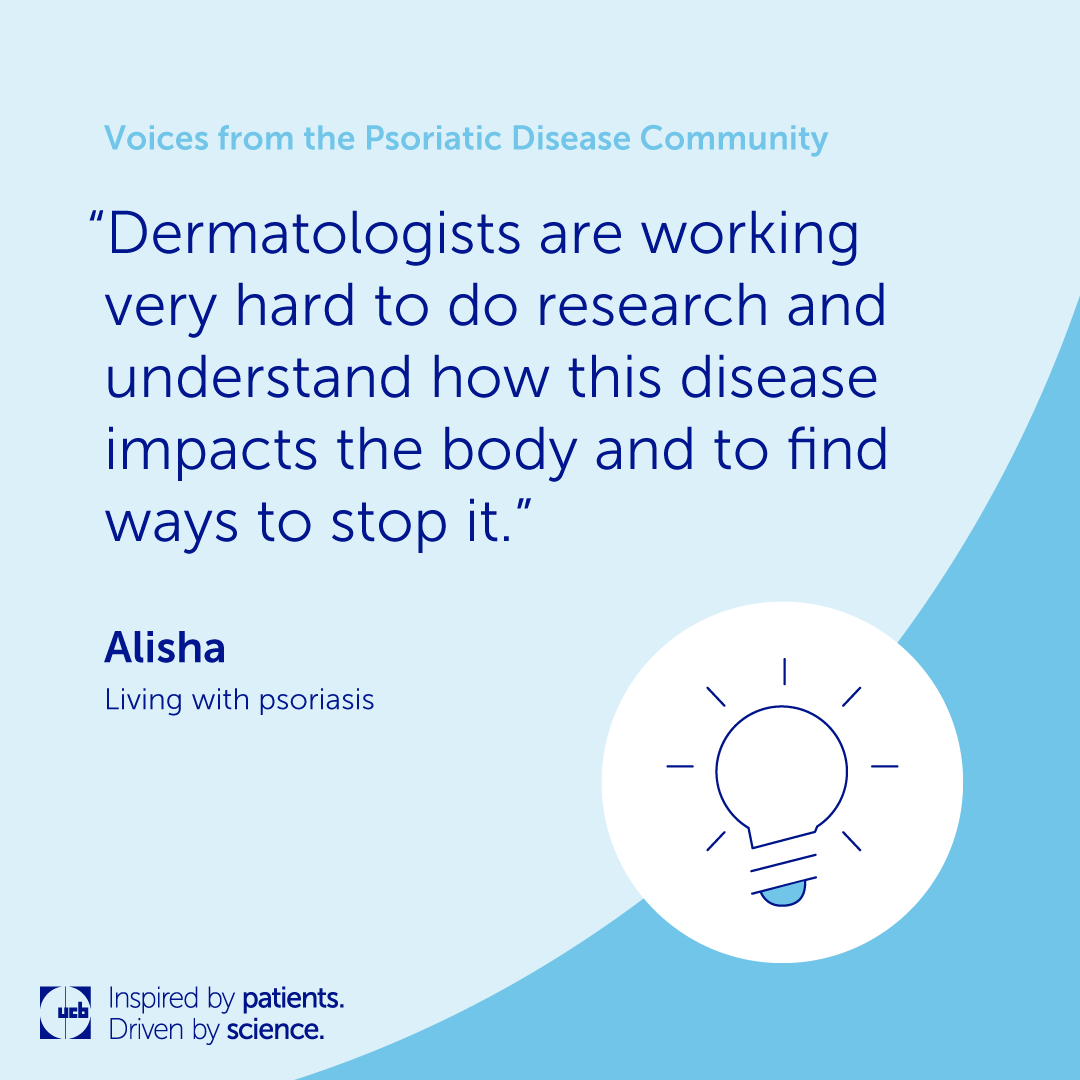
For dermatologic conditions like hidradenitis suppurativa (HS) and psoriatic disease, timely diagnosis plays a critical role in disease management. Data has shown that for people living with psoriatic disease, for example, preventing delays in diagnosis supports better patient outcomes, including less damage from inflammation over time.1-2 As researchers continue to learn more about less commonly known dermatologic diseases, like HS, early identification is again proving to be key.3-4
HS is a chronic, recurring, inflammatory skin disease. Living with it can be painful, with symptoms that include nodules, abscesses, and tunneling.3-4 HS can also impact quality of life, preventing many people from advancing their careers, attending school, traveling, or connecting with others.5
For people living with HS, a diagnosis may take an average of 10 years following symptom onset. While HS can initially present as less severe, if left untreated, the disease can progress, with chronic pain and discomfort, deep nodules, and extensive tissue damage.3,6-7 In fact, pain is a hallmark symptom of HS that we aim to address with our clinical research and solutions. Even short delays can lead to irreversible and painful scarring.8 By diagnosing HS early and working with their patients to identify an appropriate treatment, healthcare professionals may help leverage a “window of opportunity” before this painful disease progresses.9
Once a patient has achieved a response, it’s critical to maintain that response.10-11 While people living with psoriasis may not face the same delay in diagnosis as those living with HS, they have typically cycled through treatments for years due to lack of continued response.12 That’s why in psoriasis, we are continuously studying solutions that could provide long-term, complete, or nearly complete skin clearance. Solutions that provide long-term disease management can help patients strive to live their best lives, returning to the activities they love over the long run.
One thing I often hear from people living with dermatologic diseases is that they wish they’d known more about what causes their disease and appropriate treatment options sooner. We’re focused on changing that, as we aim to educate and set new standards in treating dermatologic conditions.
References
- Martorell A, Jfri A, Ochando G, et al. Present and future trends of biologic therapies and small molecules in hidradenitis suppurativa. J IMIDs. 2022;2(1):8-19.
- Arancio L, D’Amico D, Dastoli S, Fiorella CS, et al. Early intervention and cumulative life course impairment in psoriasis: a review. Clin Exp Dermatol. 2024;49(12):1525-1531.
- Jemec GBE. Clinical practice. Hidradenitis suppurativa. N Engl J Med. 2012:366(21):158-164.
- Sabat R, Jemec GBE, Matuslak L, et al. Hidradenitis suppurativa. Nat Rev Dis Primers. 2020:6(1):18.
- Mac Mahon J, et al. An Update on Health-Related Quality of Life and Patient-Reported Outcomes in Hidradenitis Suppurativa. Patient Relat Outcome Meas. 2020;11:21-26.
- Kokolakis G, et al. Delayed diagnosis of hidradenitis suppurativa and its effect on patients and healthcare system. Dermatology. 2020;236(5):421-430.
- Johnston L, Dupuis E, Lam L, Poelman S. Understanding Hurley Stage III Hidradenitis Suppurativa Patients' Experiences With Pain: A Cross-Sectional Analysis. J Cutan Med Surg. 2023;27(5):487-492.
- Snyder CL, Chen SX, Porter ML. Obstacles to Early Diagnosis and Treatment of Hidradenitis Suppurativa: Current Perspectives on Improving Clinical Management. Clin Cosmet Investig Dermatol. 2023;16:1833-1841.
- Marzano AV, Genovese G, Casazza G, et al. Evidence for a “window of opportunity” in hidradenitis suppurativa treated with adalimumab: a retrospective, real-life multicentre cohort study. Br J Dermatol. 2021;184(1):133–140.
- H.H. van der Zee, M. van de Bunte, K.R. van Straalen, Management of mild hidradenitis suppurativa: our greatest challenge yet, British Journal of Dermatology, Volume 186, Issue 2, 1 February 2022, Pages 355–356, https://doi.org/10.1111/bjd.20780.
- McLean RR, Sima AP, Beaty S, Jones EA, Eckmann T, Low R, McClung L, Spitzer RL, Stark J, Armstrong A. Durability of Near-Complete Skin Clearance in Patients with Psoriasis Using Systemic Biologic Therapies: Real-World Evidence from the CorEvitas Psoriasis Registry. Dermatol Ther (Heidelb). 2023 Nov;13(11):2753-2768. doi: 10.1007/s13555-023-01028-5. Epub 2023 Sep 27. PMID: 37759099; PMCID: PMC10613189.
- Kerdel F, Zaiac M. An evolution in switching therapy for psoriasis patients who fail to meet treatment goals. Dermatol Ther. 2015 Nov-Dec;28(6):390-403. doi: 10.1111/dth.12267. Epub 2015 Aug 10. PMID: 26258910; PMCID: PMC5042073.
Choose Country
- Global Site – English
- Australia – English
- België – Engels
- Belgique – Anglais
- Brasil – Português
- България – Български
- Canada – English
- Canada – Français
- 中国 – 中文
- Česká Republika – Angličtina
- Danmark – Engelsk
- Deutschland – Deutsch
- France – Français
- España – Español
- Ελλάδα – Ελληνικά
- India – English
- Ireland – English
- Italia – Inglese
- 日本 – 日本語
- Казахстан – ағылшын тілі
- 한국 – 한국어
- Luxembourg – Anglais
- Luxemburg – Engels
- Magyarország – Angol
- México & Latinoamérica – Español
- Nederland – Engels
- New Zeeland – English
- Norge – Engelsk
- Österreich – Deutsch
- Polska – Polski
- Portugal – Inglês
- România – Engleză
- Россия – Русский
- Slovensko – Anglický
- Suomi – Englanti
- Sverige – Engelska
- Schweiz – Deutsch
- Suisse – Français
- Türkiye – Türkçe
- Україна – Англійська
- United Kingdom – English
- U.S.A. – English



